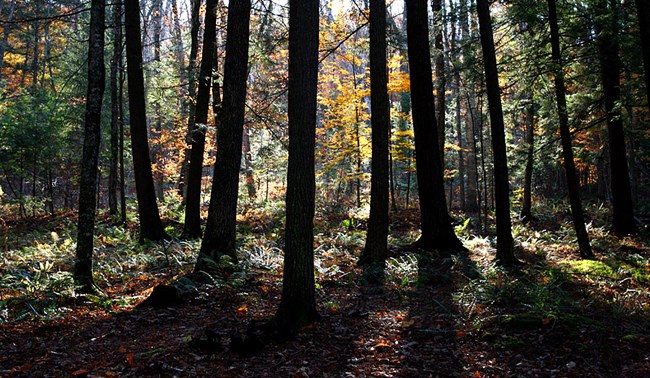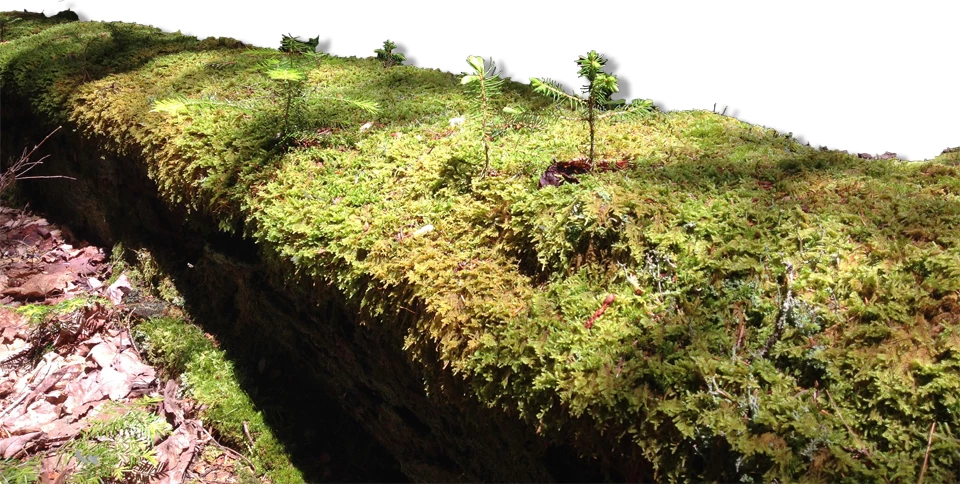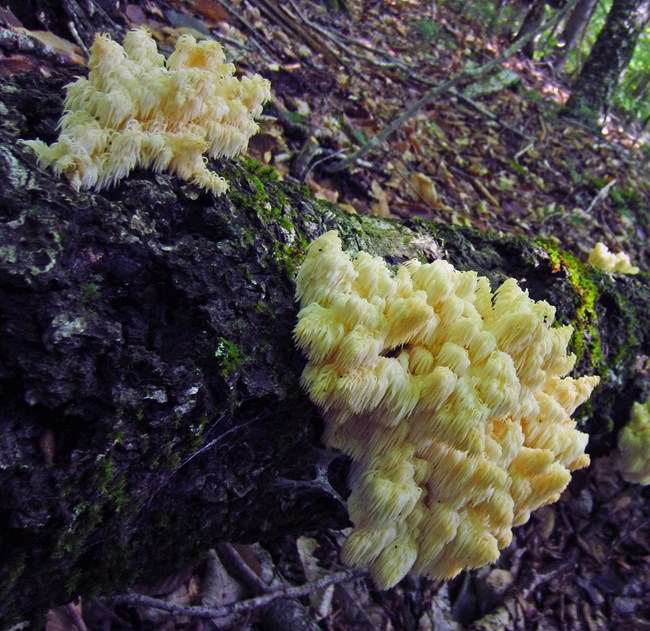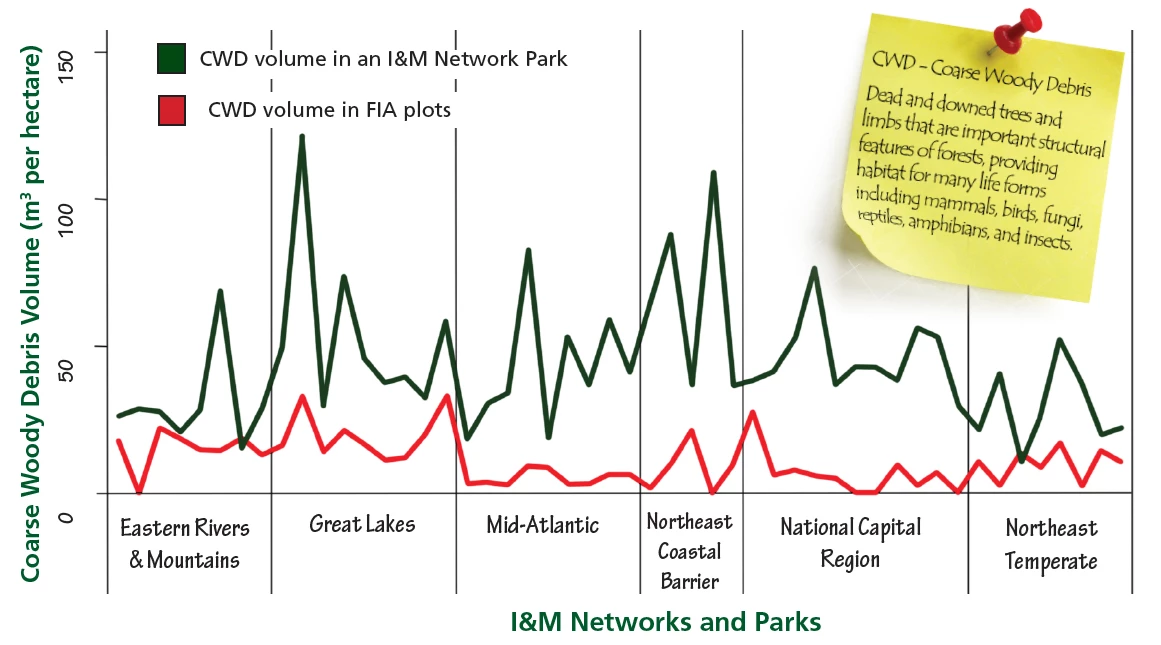Last updated: February 23, 2018
Article
National Park Forests - More Than a Pretty Picture

Ed Sharron
Forests offer many benefits
The forests of eastern national parks provide a scenic sanctuary for millions of visitorseach year. All forests, whether in national parks, preserves, or backyards also perform essential and free ecosystem services (provide oxygen, store carbon, shade watersheds, etc.), provide food and habitat to countless organisms, and generate significant economic benefits. A big difference between park forests and those beyond their boundaries is that forests in national parks are largely protected from logging – and have been in some cases for a century or longer. A study by the NPS I&M Northeast Temperate Network (NETN) took part in suggests that this protection status has led to important differences between forests in national parks and forests in surrounding areas that are both ecologically and regionally significant.
A first of its kind study
NETN long-term forest monitoring plots were part of a comprehensive study that looked at land-cover and forest vegetation data from about 25,000 permanent plots spread across 50 eastern national parks and six Inventory and Monitoring (I&M) networks to see how park forests compared to those of surrounding landscapes. Roughly 2,000 of the study plots were in I&M parks, while data from the additional 22,000+ were collected as part of the US Forest Service Forest Inventory and Analysis (USFS-FIA) program. This is the first study to compare forest structure in protected areas with surrounding forestlands over such a broad area of the United States, and is only possible because of the 10+ years of data that are now publicly available from the USFS-FIA and NPS I&M.
Kate Miller/NPS

Kate Miller/NPS photo.
Older Forests = Greater Complexity
Results of this study indicate that, regardless of the type of national park (National Historical Park, National Monument, National Park, etc.), the majority of forests within them are distinct from their surrounding forests. Park forests consistently showed more complex structureand dynamics typical of older forests, with higher densities of large live trees (trees over 2 feet in diameter averaged about 80% higher than surrounding forests) and standing dead large trees (snags). They also contained a lot more dead/rotting tree matter on the forest floor (coarse woody debris - CWD), averaging more than twice the volume (135% greater) found in surrounding forests. Tree growth and mortality rates were consistently lower in national
park forests than in the surrounding landscape, which is suggestive of older forests in national parks. Studies on habitat requirements for forest-dwelling organisms, such as older forest bird species (Brown Creepers), small mammals (pine martens), saproxylic (living in dead wood) insects, and lichens indicate that the structural differences between park and surrounding forests are ecologically significant, and park forests protect critical habitats that are harder to
find elsewhere.The landcover and ownership patterns described by this study indicated that forests in parks are often the only forests in their area that are protected from logging and
are primarily influenced by natural processes. These results underscore the importance of protected lands and their ecological value to the region.

Representing the country’s largest network of permanent monitoring plots in protected forests, eastern parks also offer a unique “natural laboratory” to track long-term forest development and natural processes over a range of forest types. To ensure that park forests continue to fill the important ecological and scientific roles documented by this research, the authors of this study encourage all park managers to let storms and other natural disturbances take their course in order to allow older forest structure to further develop - even when under pressure from the public or other park decisionmakers to “clean up” the forest after storms create
CWD and snags by knocking down trees and limbs. Moving forward, eastern forests will continue to respond to climate change and other stressors, and the trends captured by long-term NPS I&M monitoring programs will provide valuable scientific insights into forest dynamics and important guidance for land managers.
Link to full article from Ecosphere journal:
http://onlinelibrary.wiley.com/doi/10.1002/ecs2.1404/full
CWD and snags by knocking down trees and limbs. Moving forward, eastern forests will continue to respond to climate change and other stressors, and the trends captured by long-term NPS I&M monitoring programs will provide valuable scientific insights into forest dynamics and important guidance for land managers.
For More Information
NETN forest health moitoring website.Link to full article from Ecosphere journal:
http://onlinelibrary.wiley.com/doi/10.1002/ecs2.1404/full
Tags
- acadia national park
- eleanor roosevelt national historic site
- home of franklin d roosevelt national historic site
- marsh - billings - rockefeller national historical park
- minute man national historical park
- morristown national historical park
- saint-gaudens national historical park
- saratoga national historical park
- vanderbilt mansion national historic site
- weir farm national historical park
- netn
- species spotlight
- forests and woodlands
- monitoring
- biodiversity
- inventory and monitoring
- science
